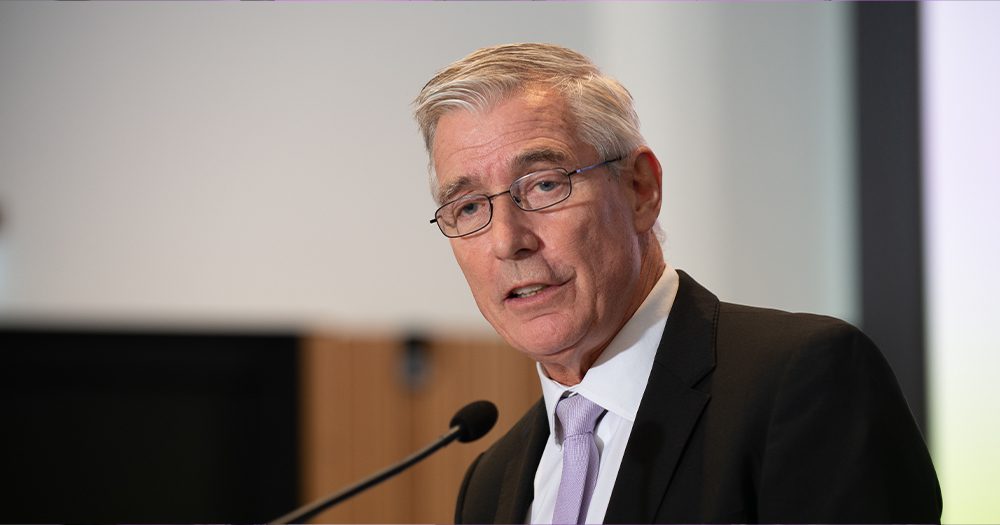Air New Zealand faced some turbulent skies in the 2024 financial year, with earnings before tax dropping to $222 million (around AU$205 million) from last year’s $574 million (AU$530 million).
The sharp decline was expected after the airline’s record year following New Zealand’s border reopening.
Net profit after tax was $146 million (AU$135 million), reflecting the difficult conditions the airline navigated throughout the year.
According to the carrier, the first half of the financial year was solid, but the second half proved tough due to worsening operational and economic conditions.
Meanwhile, domestic demand, particularly from corporate and government sectors, weakened, adding to the airline’s challenges.

Increased competition from U.S. carriers and high inflation also impacted Air New Zealand’s performance.
In better news, passenger revenue rose by 11% to $5.9 billion (AU$5.5 billion), boosted by a 23% increase in capacity, especially on international long-haul routes. However, this was offset by weaker demand and rising competition.
The airline also benefited from $90 million (AU$83 million) in unclaimed customer credits.
Elsewhere, maintenance issues with Pratt & Whitney PW1100 engines kept up to six of the airline’s Airbus neo planes grounded at times, while similar problems with the Trent 1000 engines sidelined up to three Dreamliners.
Rising costs

Despite slightly lower jet fuel prices, total fuel costs jumped by $190 million (AU$175 million) due to increased capacity. Non-fuel operating costs rose even faster, driven by broad-based inflation and more seats.
Landing charges, air navigation fees, and engineering materials were the biggest contributors to this cost increase, which dragged down the airline’s overall financial performance.
Over the past five years, cumulative inflation has pushed non-fuel operating costs up by 20-25%, with productivity still below pre-COVID levels due to ongoing supply chain disruptions.
Air New Zealand Chair Dame Therese Walsh called the past 12 months “a difficult year managing both macroeconomic and operational challenges”.
“We know these challenges will pass, some faster than others, but they have had a significant impact on our financial performance this year,” she said.
“Today we announced earnings before taxation of $222 million and estimate earnings would have been around $100 million higher, net of compensation, had we been able to operate our aircraft and schedule as intended.”
Clearer skies?

But Dame Therese is confident brighter skies lie ahead for the Kiwi carrier.
“Our balance sheet is robust, with capacity to prudently manage these headwinds while investing sensibly in the areas that matter for our people and our customers,” she added.
“We believe in the strength of our plan and our team and are excited about the opportunities ahead as we move out of this current cycle.”
Meanwhile, Air New Zealand CEO Greg Foran thanked customers for their understanding during this year’s “unavoidable scheduling changes”.
“We do not take our customers choice to fly with Air New Zealand for granted and are grateful for the patience they have shown us,” he remarked.
“We took immediate action to minimise the disruption, leasing three Boeing 777-300ERs, securing additional spare engines and adjusting our network and schedule to deliver greater reliability.
“The challenges we are facing are not unique to Air New Zealand. Supply chain and aircraft delivery delays, growing costs and a shortage of labour in key areas like engineering are major issues facing many airlines across the global aviation industry.
“However, the reality is that while these issues continue to play out, Air New Zealand is expecting a challenging year ahead.”
Eyes on the prize

Foran added that the airline remained steadfast in its purpose.
“As we continue to navigate this difficult environment, we remain focused on the big picture – controlling what we can, relentlessly focusing on our customers and our people, and investing for the future,” he added.
“A key priority for us continues to be delivering excellent customer service and a range of competitive fares.
“We remain committed to investing for the future, with expected aircraft-related capital expenditure of $3.2 billion over the next five years. This includes a significant, multi-year interior retrofit programme on our 14 existing Dreamliner aircraft.
“We anticipate delivery of the first new GE-powered Boeing 787-9 aircraft towards the end of the 2025 calendar year, which will provide options for continued growth, cost efficiencies and network expansion opportunities.”
In May, Foran said the national carrier‘s international network capacity was back to around 91% of pre-COVID levels, with the airline set to fly 4.5 million seats across 39 international routes between March and October.





